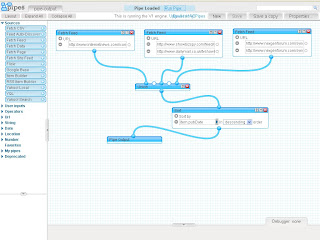Following is a list of essential tips on how to structure your site and its pages and directories optimally for search engine optimization purposes.
Page Content• Keep your pages short, between 2 and 8 KB in size.
• Place your most important keywords and phrases in your title, h1, and strong tags. But be careful not to overuse the strong tag - it is important that the strong tag be used to naturally emphasize important words, and not merely keywords, or your page may be given a Keyword Stuffing penalty.
• Minimize JavaScript, Flash, sound, etc. as these are not recognized by search engines. Quality text content is much more important.
• Eliminate irrelevant content - minimize content and maximize quality (relevance).
• Pages with quality content usually rank better (because they are linked more, giving you higher link popularity) than mere online brochures or pages that focus on selling things.
• Content should come first - read about the SEO table method you can implement to ensure that your quality content is sourced by spiders first.
Keyword Phrases• Link to your start page (front page or home page) from all pages with your most important key phrase (combination of keywords). Your start page should be based on this key phrase.
• Represent your important key phrases well on all pages and use the keyphrase as linktext (the text that people see when they click on a URL, as opposed to the actual URL).
• Also include the key phrase in image alt tags, as these are read by search engine spiders.
Meta Tags• Each page should contain no more than 4-6 keywords in the keyword tag.
• Description - no more than 120-150 characters.
• Meta tags are rarely used by Google anymore - the description tag only to display your site's description in the search results.
• Keyword and meta tags should never use "global keywords" (you should have unique keywords for each page).
• Focus on specific key phrases that you are optimizing on - no need to include general words.
• All other meta tags are unnecessary for SEO purposes.
SEO Site Structure• Organize according to themes and logic based on your keywords phrases
(keyphrases can also be a single word).
• Use book-like structure, with chapters and blocks delegating importance.
• Use header tags (h1, h2, h3) for content hierarchy: h1 tags for the page topic (ie. use only one per page), h2 tags for a topical headings, and h3 tags for sub-topical headings.
• Use
strong tags to emphasize a page's keyphrase - you can style these accordingly.
• Search engines recognize stylesheet alterations to tags - use carefully.
• Short link paths - users should be able to access subpages by traversing a minimal number of pages from the start page.
• Each page should have one concept, ie. one or maximum two main key phrases that are more important than the rest.
• A single, unified concept (without additional data) will greatly increase weighting (importance) of that page in the world of pages that exist for that
keyphrase.
• Have an identical navigation menu on each page, with navigation links based on keywords.
• Build focus points by repeating links and linktexts
• Use keywords for linktexts that are present in title and h1 tags
• Keyphrase tags (title, h1) should not contain more than 4-8 keywords (60-80
chars), as each additional word dilutes the worth of a single keyword.
• Only text links count - not graphical buttons, etc.
• Don't use pop-ups! These are penalized heavily by Google.
• It's best to minimize scripts and dynamic code (ie. JavaScript) as well. In fact, JavaScript links are ignored.
• Redirect example.com -> www.example.com (this prevents the distribution of LP to two domains). Read more about domain redirects in our search-friendly domain and file redirects tutorial.
